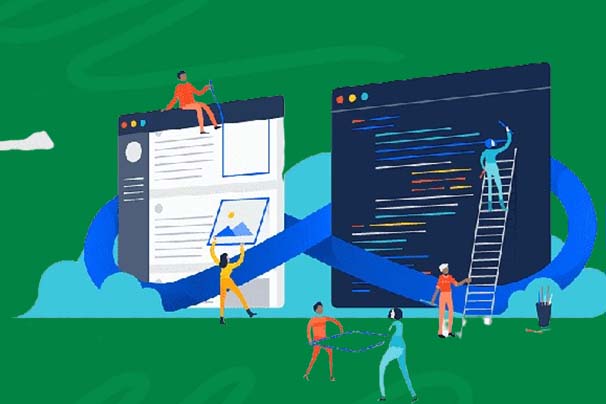Software development is the process of computer science activities that are mainly dedicated to creating, deploying, designing, and supporting software. It is a process that involves coding and maintaining software solutions. Software applies mathematical and computer science principles to create reliable, efficient, and user-friendly programs. That helps to address problems in the real world and needs that change over time.

These are the steps that programmers use to build various computer programs. The process, commonly known as the software development life cycle, includes different phases. That offers a method for building software that meets user requirements and technical specifications. The goal of the IT software development process is to create effective products with a set timeline and budget.
Types of Software
Software developers, also called coders or programmers, make use of different programming languages and tools to build solutions for users or businesses. Just so you know, software belongs to three groups based on its application and use. Below are the types of software.
System Software
System software is the foundation of your computer. It is responsible for controlling and managing the computer’s hardware and providing basic services for other software programs to run smoothly. Without system software, your computer would be little more than a box of electronic components.
Application Software
Application software is what most people think of when they think of a “computer program.” It is any software designed to perform a specific task, such as word processing, creating spreadsheets, managing databases, or playing games.
Programming Software
Programming software is software that helps programmers write other software programs. It provides tools for creating code, debugging errors, and testing new programs.
Without programming software, it would be much harder for programmers to create the software we use every day. So while programming software may not be as well-known as system or application software, it’s still an essential part of the computing world.
A fourth possible type is embedded software. It is used to control devices and machines that are not considered computers. Some of these include industrial robots, cars, telecommunication networks, and more. This device’s software is connected as a section of the Internet of Things.
Steps in the Software Development Process
Software development is a process that is structured well with different key stages. While there are different types of methods, such as waterfall and agile, most projects of software development include the below steps.
Needs Identification
Needs identification is a very important marketing research stage of this process. Before software is built, there is a need to perform market research to determine the product’s viability. Developers need to identify the services the product should provide. So that the targeted consumers can get the most out of it. We have different ways information can be gotten, including getting reviews from existing and potential customers and conducting surveys.
The teams must also discuss the weaknesses, strengths, and opportunities of this product. The software development process will only begin if the product meets all of the parameters needed for its success.
Requirement Analysis
The stakeholders agree to the specifications and the technical and user requirements of the products in order to achieve their goals. This stage provides a well-detailed outline of the scope, testing parameters, and the task of developers to deliver the best quality products.
This stage involves the developer, testers, users, project managers, and assurance. It is also the stage whereby the programmers will choose the best approach, such as V mode or waterfall.
Design
This is the third stage of this process. In this stage, developers and architects draw up the technical specs needed to create the software. They will discuss factors such as budget, time, project limitations, method, application technologies, risk levels, team composition, and architectural design.
The Design Specification Document shows the architectural components, design, communication, user flows of the product, and front-end representation. This stage offers a template for testers and developers. And it reduces the chances of delays and flaws in the already-finished product.
Development and Implementation
This stage is the implementation and development of the design parameters. The developer’s code is based on the requirements and specifications agreed upon in the previous stages. Following company guidelines and procedures, front-end developers create the interfaces, while back-end developers create relevant database data.
The programmers get to test and review every other code. Once the coding is done, developers will send the product to the implementation stage. This will enable them to test out a pilot version of the program to make the performance meet the requirements.
Testing
The testing phase makes sure that the software is bug-free and performs well before reaching users. Expert testers examine the product’s functions carefully. And ensuring they align with the requirements analysis document. Testers employ exploratory testing or follow a test script to assess individual software components.
When defects are found, testers report them straight to the developers. Developers address these issues, and the testing process is repeated until the software is error-free and meets the specified product requirements.
Deployment and maintenance
After ensuring the software is free of defects, developers can provide it to customers. Following the launch of the software’s final version, the IT software development company makes up a maintenance team.
This team will help handle any problems clients may face while using the product. Minor issues may be addressed with a hotfix, but more significant software failures necessitate an update.
